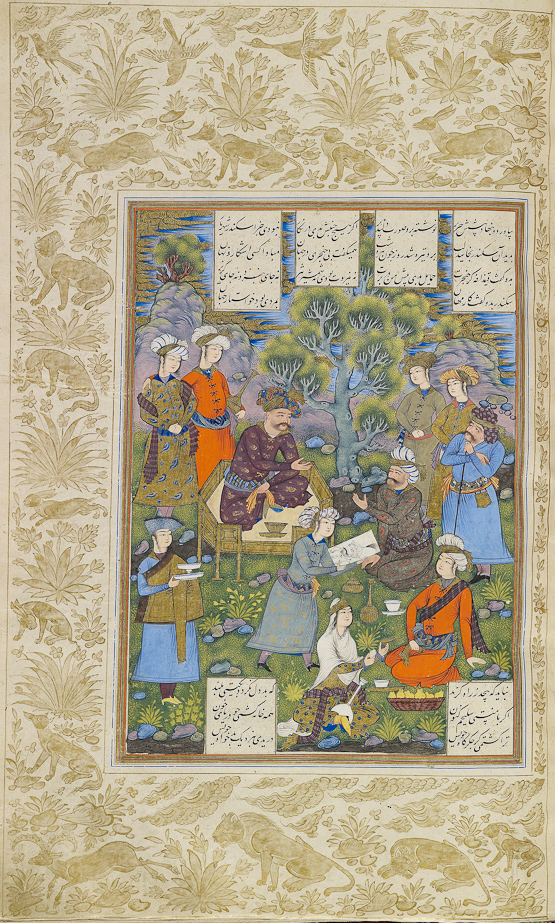
Ferdowsi, Shahnameh
Safavid: Mashhad, April–May 1648
Scribe: Mohammad Hakim al-Hoseyni
Artist: attributed to Mohammad Qasem by Robinson
Binding: lacquer by ‘Ali Ashraf, March–April 1747
Patron: Qarajaghay Khan, governor of Mashhad
Opaque watercolour, ink and gold on paper
Windsor, The Royal Collection, MS A/6. RCIN 1005014, fol. 498r
Lent by Her Majesty The Queen
After visiting the Ka‘ba, Eskandar (Alexander the Great) led his troops to Egypt. Queen Qeydafeh of Andalus (Candace of Meroë) sent a spy to make a portrait of him. Eskandar came to Qeydafeh’s court disguised as his ambassador, but the queen recognised him and he had to admit his true identity. The illustration departs from the text.
One would expect to see Qeydafeh enthroned with Eskandar’s portrait and Eskandar himself seated at a lower level. Instead, the painting shows Eskandar on the throne and no Qeydafeh — unless we imagine that she is looking through our eyes, the eyes of the viewers.
The image of Eskandar has been interpreted as a posthumous portrait of Shah ‘Abbas I. The kneeling figure who extends a hand towards him may be the manuscript’s patron, Qarajaghay Khan.
The volume was presented to Queen Victoria in 1839 by Kamran Shah of Herat.




